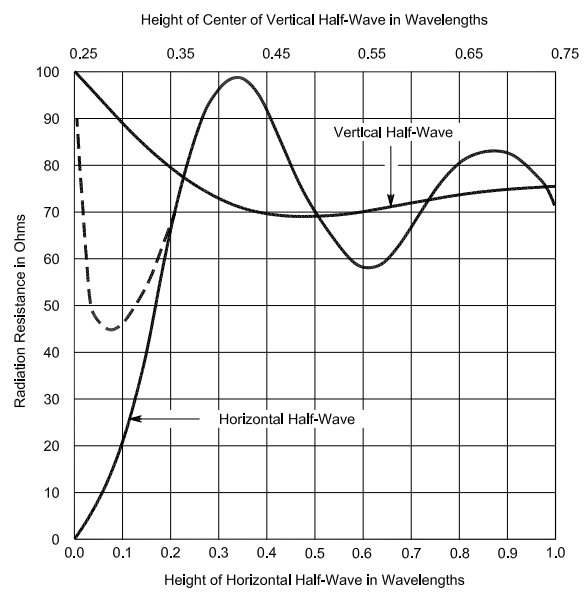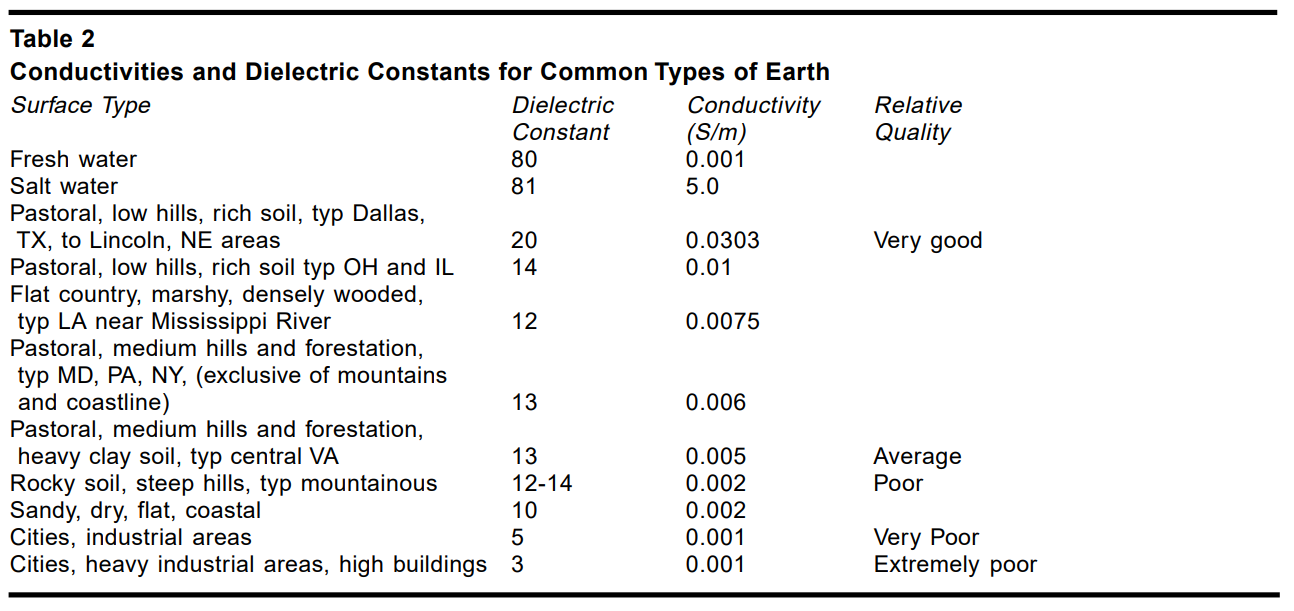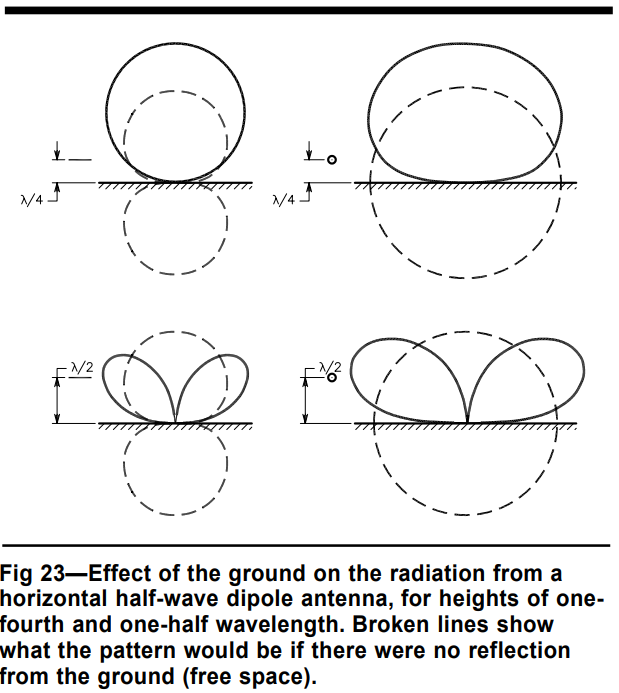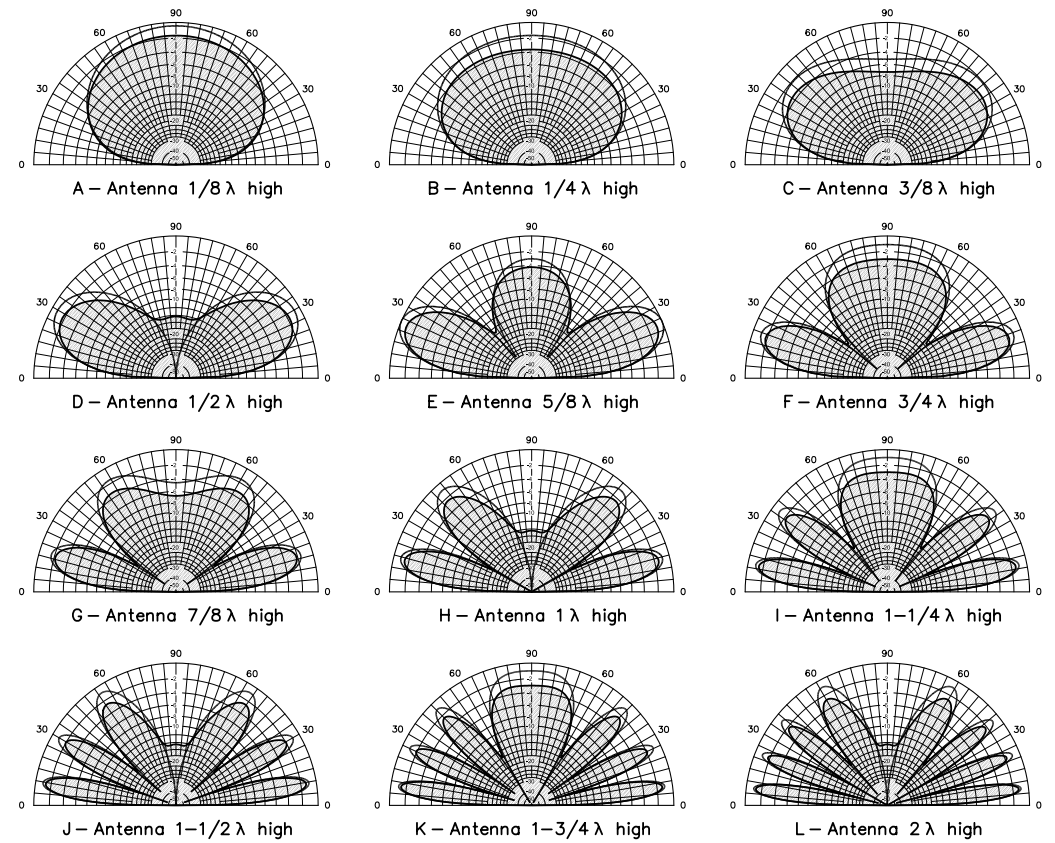Source ARRL Antenna book Ed. 21 Chapter 3
From wikipedia. “Ground” is usually idealized as an infinite source or sink for charge, which can absorb an unlimited amount of current without changing its potential. Ground or earth is a reference point in an electrical circuit from which voltages are measured, a common return path for electric current, or a direct physical connection to the earth.
The interactions with the ground can be:
- Reactive near field: It happens very near the antenna. The antenna acts like a capacitor or indutor, where energy is stored and a little is radiated. The mutual impedances between the antenna and the environment affect the impedance of an antenna.
- Radiating far field: The ground affect the radiation pattern of the antenna. It is also related with the polarization of the signal,
Reactive Near Field
When you radiate with an antenna, the wave is reflected in the ground. The feed point resistance of the antenna is affected by the height of the antenna above the ground because mutual coupling betweent the ground and the antenna. The electrical characteristics of the ground affect both the amplitude and the phase of reflected signals.

From the picture above we can see that for horizontal half-wave antenna the effect of perfect ground and real earth are negligible if the antenna height is greater than \(0.2 \lambda\). At lower heights, the feed-point resistance over perfect ground decreases rapidly, going closer to a theoretically perfect ground. In real earth the resistance increase below \(0.08 \lambda\). The reason of this is that the reactive (induction) field of the antenna is absorbed by the lossy ground in close proximity.
The ground characteristics are conductivity and dielectric constant.
Radiating Far Field
The wave that is reflected in the ground combine with the incident wave, this modify the radiation pattern. There are some cases in which some elvation angles above the horizon the idrect and reflected waves are exactly in phase, this is the wave is stronger, also you will have the opposite in some nulls.
Better ground you will have less losses. In a perfect ground the signal is reflected. In a poor quality ground the signal is not reflected because of ground losses. It is usual to create an artificial ground with a mesh.

The most important characteristics that defines the ground are dielectric constant and conductivity.There is a paper that explains the dielectric constant in the moon Estimation of lunar surface dielectric constant using MiniRF SAR data. The dielectric constant of the moon surface is arronund 3.

The picture below show the different radiation patterns of a dipole antenna in different heights:

From a little research, antennas in the ground, commonly named dipoles over ground, has losses over high elevation antennas.
Moon effects
The lunar ground acts as a partial reflector and partial absorber to the RF signals
Conclusion
Lying the antenna in the ground would have a radiation pattern of a circle. In the ARRL book and some ham radio say that you have losses due to the ground, but the uses of a dipole antenna in our science case (moon telescope) is way different from a communication antenna. in the near field it is probably that modify the impedance of the antenna.